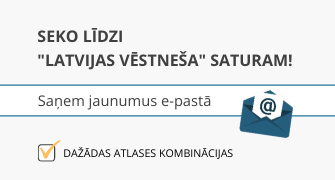
Agreement between the government of the Republic of Latvija and the government of the Republic of Estonia regarding border crossing points
The Government of the Republic of Latvia and the Government of the Republic of Estonia, hereinafter referred to as the Contracting Parties;
Considering the necessity of developing the organisation of the movement across national boundaries of persons, vehicles, goods, and products;
Desiring to establish favourable conditions for international traffic between the Republic of Latvia and the Republic of Estonia;
Considering the renewal of the Agreement between the Republic of Latvia and the Republic of Estonia regarding the re-establishment of national borders;
Have agreed as follows:
Article 1
For persons, regardless of citizenship or national affiliation, and the means of transportation, products, or other forms of goods either belonging to them or used by them, the following border control points open for crossing the border between the Republic of Latvia and the Republic of Estonia:
(a) by railway:
Lugaži (passenger border railway station and the cargo car
counting border station)
- Valga,
(b) by road: Ainaži - Ikla,
Valka-2 - Valga-1,
Veclaicene - Murati.
Article 2
For inhabitants of the Republic of Latvia and the Republic of Estonia and the means of transportation belonging to them or used by them, without goods, the following border crossing points are defined for crossing the national border:
Ainaži - Vana-Ikla, Unguriņi - Lilli,
Ramata - Jäärja, Omuļi - Holdre,
Ipiķi - M›isakūla, Valka-3 - Valga-2
Laksti - Laatre, Valka-1 - Valga-3
Arakste - Penuja, Gaujiena - Taheva,
Ape - Vastse-Roosa.
Article 3
1. Radioactive materials, narcotic drugs and psychotropic substances are transported across the national borders, according to the laws and provisions of the Contracting parties, at the following border control points:
Lugaži - Valga (by railway)
Ainaži - Ikla (by road)
Veclaicene - Murati (by road).
2. Transport of livestock, animal, and agricultural products across national borders, according to the laws and provisions of the Contracting parties, occurs at the following border control points:
Lugaži - Valga (by railway) Valka-2 - Valga-1 (by road)
Ainaži - Ikla (by road) Veclaicene - Murati (by road).
Article 4
1. Closure or changes in the working procedure of the border crossing points mentioned in Article 1 of this Agreement, as well as the opening of new points occurs upon mutual agreement expressed by the exchange of diplomatic notes.
2. Closure or changes in the working procedure of the border crossing points mentioned in Article 2 of this Agreement, occurs upon the mutual agreement of border representatives authorized by the Contracting Parties, in accordance with the Agreement regarding the activities of border representatives.
Article 5
In planning and realizing the border crossing point projects, the Contracting Parties shall include the possibility, whenever possible, of implementing border guard, customs, and other forms of joint control.
Article 6
1. Traffic at border crossing points may be closed in the interest of social safety, if sanitary or movement conditions fundamentally worsen, as well as in the case of unforeseen calamity.
The Contracting Party which closes or limits traffic, shall inform the other Party, usually not later than five days before the planned closing or limiting of traffic at the border crossing point.
2. In the case of closing or limiting of traffic for construction or renovation, the other Contracting Party shall be informed not later than two months before the beginning of the construction or renovation.
3. In cases where circumstances prevent prior notification of border crossing point closing or limitation of traffic, the other Contracting Party shall be notified immediately.
Article 7
Authorized border representatives, in the event of unforeseen calamity, large accident, or disaster as well as under other extreme conditions, may, after mutual agreement, permit the crossing of the border outside of the defined border crossing point.
Article 8
1. Those persons living near the border, who do not have means of egress from their place of inhabitancy in their nation's territory by permanent roads are permitted outside of defined border crossing points in order to reach and return from permanent roads in their nation's territory.
The transport of goods belonging to these persons across the border outside of defined border crossing points shall be defined by separate agreement by the Contracting Parties.
2. The crossing of the national border outside of the defined border crossing points by the aforementioned persons is permitted by licenses issued by the border representatives of the Contracting Parties.
The license shows: the person's family and given name, passport or other personal identification number, address, and location where the person is permitted to cross the border. The license is issued for free.
Article 9
The contracting parties require the Authorized border representatives to agree upon the license form, issuing procedure, and requirements as well as the procedure for implementation and regulation of Article 8 of this Agreement within a period of three months from the period this Agreement enters into force.
Article 10
This Agreement shall enter into force on the date when the Contracting Parties have notified each other that all necessary constitutional formalities for its entry into force have been completed.
The Agreement is concluded for an indefinite period of time. It may be amended by the agreement of the Contracting Parties. It may be terminated by written notification through diplomatic channels by either Contracting Party and shall cease to be in force 90 days after such notice has been received.
Done at Riga on the 10th day of July, 1996, in duplicate, in the Latvian, Estonian, and English language, all texts being equally authentic. In case of any divergency of interpretation of the provisions of the Agreement, the English text shall prevail.
For the Government of For the Government of
the Republic of Latvia the Republic of Estonia
